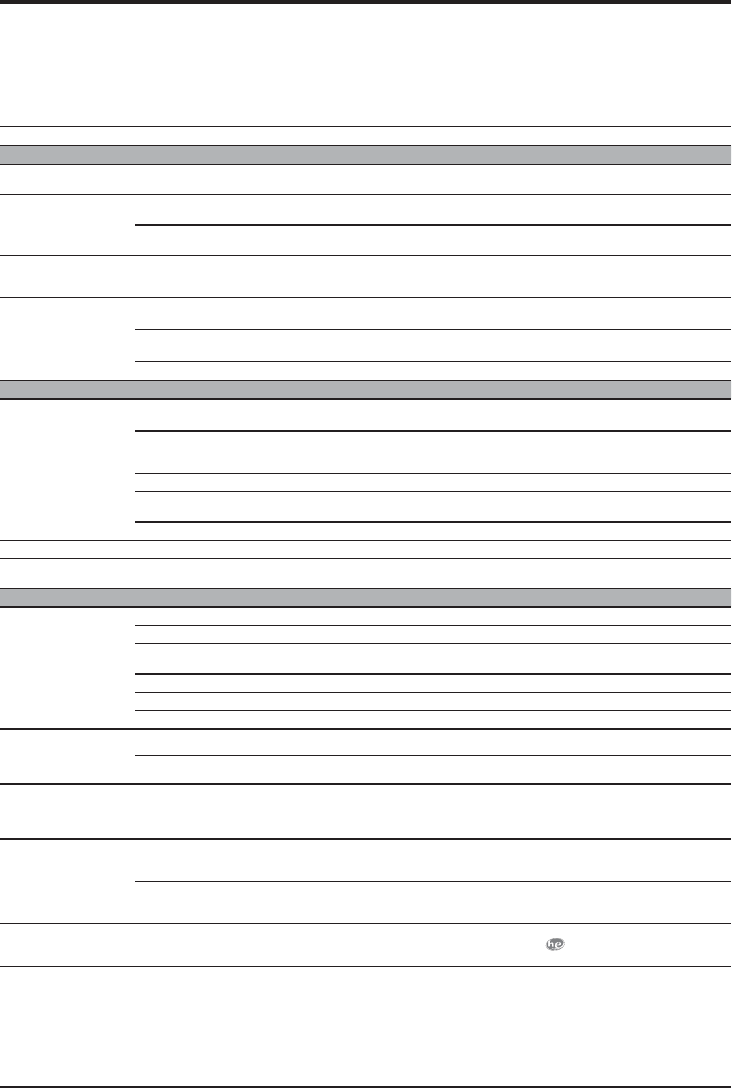
25
Before calling for service, review this list. It may save both time and expense. The list includes common occurrences that are not
the result of defective workmanship or materials in this washer.
OCCURRENCE POSSIBLE CAUSE SOLUTION
NOISE
High pitch “jet engine”
noise.
A certain amount of motor whine is normal
during the spin cycle.
Rattling and clanking
noise.
Foreign objects such as coins or safety
pins may be in drum or pump.
Stop washer and check drum. If noise continues after washer is restarted,
objects may be in pump. Call your authorized servicer.
Belt buckles and metal fasteners are hitting
wash drum.
To prevent unnecessary noise and damage to drum, fasten fasteners and
turn items inside out.
Thumping sound. Heavy wash loads may produce a thumping
sound. This is usually normal. If sound con-
tinues, washer is probably out of balance.
Stop washer and redistribute wash load.
Vibrating noise. Washer is not resting firmly on floor. Move washer so it rests firmly on floor. Adjust leveling legs. See INSTALLA-
TION INSTRUCTIONS for details.
Shipping bolts and foam block have not
been removed during installation.
See INSTALLATION INSTRUCTIONS for removing shipping bolts and
foam block.
Wash load unevenly distributed in drum. Stop washer and rearrange wash load.
OPERATING
Washer does not start. Electrical power cord may not be plugged
in or connection may be loose.
Make sure plug fits tightly in wall outlet.
House fuse blown, circuit breaker tripped,
or a power outage has occurred.
Reset circuit breaker or replace fuse. Do not increase fuse capacity. If
problem is a circuit overload, have it corrected by a qualified electrician. If
problem is a power outage, call local electric company.
Water supply faucets are not turned on. Turn on water supply faucets.
Motor is overheated. Washer motor will
stop if it becomes overheated.
It will automatically restart after a cool down period of up to 30 minutes (if
washer has not been manually turned off).
Washer door is not completely closed. Close door completely.
Washer won’t spin. Load is too small. Add 1 or 2 similar items to help balance the load.
Residue left in drum. Heavily soiled items. Wipe drum with a nonabrasive household cleanser, then rinse. Shake or
brush excess dirt and sand from items before washing
SHOWN IN LED DISPLAY
“Check the tap”
No or slow water fill
Water inlet hoses are not installed. Install Hot and Cold water hoses and turn on Hot and Cold water supply valves.
Water supply valves are not turned on. Turn on Hot and Cold water supply valves.
Water supply is not adequate in installation. Test water pressure at another faucet in the house. Water pressure must be
at least 30 psi (260 kPa).
Water is being used elsewhere in the house. Avoid running water elsewhere while washer is filling.
Water inlet hoses are kinked. Straighten hoses.
Water inlet screens are clogged. Remove hoses and clean sediment from screens.
“Check drain filter”
Washer experiencing drain
problems during cycle
Drain pipe blocked. Unclog drain pipe.
Pump filter clogged. See Care and Cleaning for pump filter cleaning instructions.
“Check the door”
Washer door is open or
not closed completely
Close door completely.
“Water safety alert”
Washer not maintaining
water level
Drain pipe position too low and water
siphoning out drain hose.
Drain pipe height must be minimum 24” above bottom of unit. Refer to
Installation Instructions
for correct drain pipe installation requirements and
adjust accordingly
If drain pipe height is adequate, error
detected can only be resolved by calling
service technician.
Close all water supply faucets and call your authorized servicer.
“Detergent overdosing”
Too many suds detected
An excessive amount of detergent has
been added, causing extra suds; additional
rinsing has not corrected the issue.
Use less detergent. Verify detergent is fit for use in front load washers. Look
for this symbol on the detergent label:
.
Service Prevention Checklist
Solutions to Common Problems


















